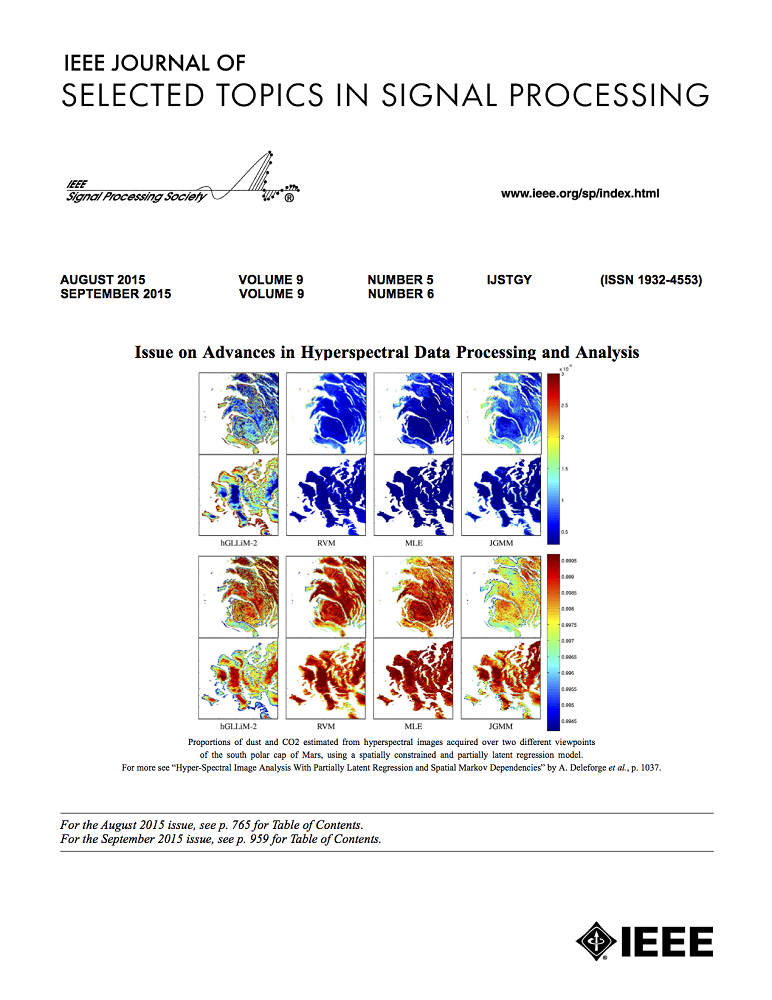具有少量少数样本的不平衡数据集的深度极小极大分类器
IF 8.7
1区 工程技术
Q1 ENGINEERING, ELECTRICAL & ELECTRONIC
IEEE Journal of Selected Topics in Signal Processing
Pub Date : 2025-02-28
DOI:10.1109/JSTSP.2025.3546083
引用次数: 0
摘要
极大极小分类器的概念在统计决策理论中已经建立,但是通过神经网络实现它仍然具有挑战性,特别是在训练数据不平衡的情况下,少数类的样本数量有限。为了解决这个问题,我们提出了一种新的极大极小学习算法,旨在将表现最差的类的风险降至最低。我们的算法通过两个步骤进行迭代:一个最小化步骤,根据选定的目标先验训练模型,一个最大化步骤,将目标先验更新为训练模型的对抗先验。在最小化中,我们引入了一个有针对性的对数调整损失函数,该函数可以有效地识别目标先验下的最优决策边界。此外,基于我们得到的一个新的先验相关泛化界,我们从理论上证明了我们的损失函数比现有的损失函数具有更好的泛化能力。在最大化过程中,我们通过将其转向对抗性先验来改进目标先验,这取决于表现最差的类别而不是每个类别的风险估计。我们的最大化方法在少量样本的情况下特别稳健。此外,为了适应过度参数化的神经网络,我们将整个训练数据集划分为两个子集:一个用于在最小化步骤中进行模型训练,另一个用于在最大化步骤中更新目标先验。我们提出的算法具有可证明的收敛性,实验结果表明,我们的算法优于或可与现有方法相媲美。本文章由计算机程序翻译,如有差异,请以英文原文为准。
Deep Minimax Classifiers for Imbalanced Datasets With a Small Number of Minority Samples
The concept of a minimax classifier is well-established in statistical decision theory, but its implementation via neural networks remains challenging, particularly in scenarios with imbalanced training data having a limited number of samples for minority classes. To address this issue, we propose a novel minimax learning algorithm designed to minimize the risk of worst-performing classes. Our algorithm iterates through two steps: a minimization step that trains the model based on a selected target prior, and a maximization step that updates the target prior towards the adversarial prior for the trained model. In the minimization, we introduce a targeted logit-adjustment loss function that efficiently identifies optimal decision boundaries under the target prior. Moreover, based on a new prior-dependent generalization bound that we obtained, we theoretically prove that our loss function has a better generalization capability than existing loss functions. During the maximization, we refine the target prior by shifting it towards the adversarial prior, depending on the worst-performing classes rather than on per-class risk estimates. Our maximization method is particularly robust in the regime of a small number of samples. Additionally, to adapt to overparameterized neural networks, we partition the entire training dataset into two subsets: one for model training during the minimization step and the other for updating the target prior during the maximization step. Our proposed algorithm has a provable convergence property, and empirical results indicate that our algorithm performs better than or is comparable to existing methods.
求助全文
通过发布文献求助,成功后即可免费获取论文全文。
去求助
来源期刊

IEEE Journal of Selected Topics in Signal Processing
工程技术-工程:电子与电气
CiteScore
19.00
自引率
1.30%
发文量
135
审稿时长
3 months
期刊介绍:
The IEEE Journal of Selected Topics in Signal Processing (JSTSP) focuses on the Field of Interest of the IEEE Signal Processing Society, which encompasses the theory and application of various signal processing techniques. These techniques include filtering, coding, transmitting, estimating, detecting, analyzing, recognizing, synthesizing, recording, and reproducing signals using digital or analog devices. The term "signal" covers a wide range of data types, including audio, video, speech, image, communication, geophysical, sonar, radar, medical, musical, and others.
The journal format allows for in-depth exploration of signal processing topics, enabling the Society to cover both established and emerging areas. This includes interdisciplinary fields such as biomedical engineering and language processing, as well as areas not traditionally associated with engineering.
 求助内容:
求助内容: 应助结果提醒方式:
应助结果提醒方式:


